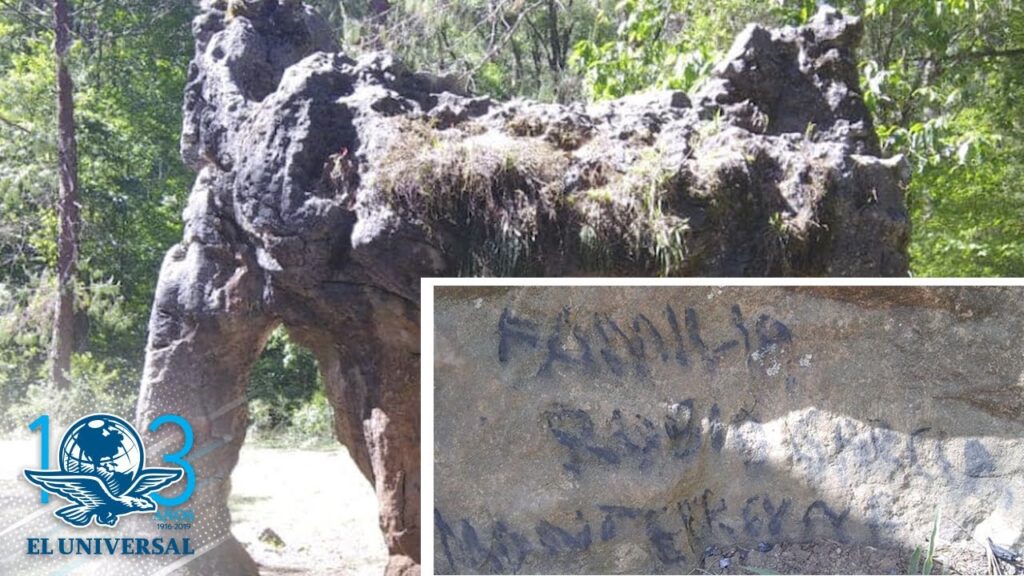Exploring the Legacy of Miguel Alemán Valdés: Mexico’s Post-Revolution President
Miguel Alemán Valdés served as the President of Mexico from 1946 to 1952 and left a profound impact on the country’s modern development. His tenure marks the first instance when the presidency was assumed by a civilian after a series of military men. Alemán’s administration focused heavily on industrialization, significantly advancing the Mexican economy. However, his presidency was also marred by allegations of corruption and nepotism which remain controversial to this day. Despite these accusations, his vision for a modern Mexico paved the way for significant growth and industrial development that reshaped the nation’s economic landscape.
As the driving force behind major infrastructure projects, Alemán’s influence is visible in the modernization of Mexico’s transportation networks. During his presidency, he advocated for the expansion of the country’s highway system, including the construction of new roads and bridges that connected remote areas to major cities, thus promoting tourism and internal commerce. These developments were instrumental in facilitating the travel and adventure industry that thrives in Mexico today, creating access to previously unreachable breathtaking destinations. Notably, Alemán championed the development of the Mexican tourism sector, understanding its potential to generate income and jobs.
A key figure in the establishment of higher education and cultural institutions, Miguel Alemán Valdés championed the advancement of educational opportunities and cultural preservation. Under his presidency, the National Polytechnic Institute saw expansion, and numerous universities across the country were founded. This investment in education has yielded a lasting legacy, producing new generations of Mexicans who are well-educated, highly skilled, and ready to contribute to the nation’s ongoing development. Moreover, Alemán’s passion for culture was evident in his support for cinema and the arts, which led to a golden age in Mexican cinema and increased cultural visibility for Mexico on the world stage.
Miguel Alemán Valdés: Understanding the Impact of “El Cachorro de la Revolución”
Miguel Alemán Valdés, also known as “El Cachorro de la Revolución”, was a prominent figure in Mexico’s post-revolutionary period. His father, General Miguel Alemán González, fought in the Mexican Revolution, which afforded young Alemán the nickname that underscored his inheritance of political influence. Born on September 29, 1900, in Sayula, Veracruz, Alemán was raised in a tumultuous era that shaped his vision for a modern Mexico. His tenure as President of Mexico, from 1946 to 1952, marked a significant shift from military-led governments to civilian rule, ushering in an era of economic growth and industrialization.
During his presidency, Miguel Alemán Valdés embarked on an ambitious plan to transform Mexico’s infrastructure and economy. He championed industrialization, supporting the growth of domestic industries and the expansion of the urban workforce. Alemán’s government invested heavily in public works projects, including the construction of schools, hospitals, and transportation systems. This fervent push towards modernization helped Mexico to attract foreign investment and laid the groundwork for future economic expansion.
Moreover, Alemán played a significant role in promoting tourism as a means of economic development. Under his administration, Mexico sought to become a premier destination for international travelers. Emphasizing Mexico’s rich cultural heritage and natural beauty, Alemán’s policies led to the construction of new hotels, highways, and airports designed to accommodate the growing influx of tourists. These efforts not only carved a niche for Mexico in the global tourism market but also highlighted the country’s potential as a land of adventure and cultural exploration.
However, the rapid development and industrial progress during Alemán’s presidency came at a cost. Critics pointed out that economic gains were unevenly distributed, with a widening gap between the wealthy and the poor. While Mexico’s urban centers thrived, rural areas often lagged behind, missing out on the benefits of the country’s newfound prosperity. Despite these criticisms, Alemán’s legacy in shaping modern Mexico remains undeniable, making him a complex and sometimes controversial figure in Mexico’s journey through the 20th century.
The Presidential Journey of Miguel Alemán Valdés and His Role in Mexico’s History
“`html
Mexico’s post-revolutionary period heralded new leadership that would shape the country’s political, economic, and social landscape in the mid-20th century. Among the significant figures of this era was Miguel Alemán Valdés, who served as the President of Mexico from 1946 to 1952. His presidency marked a pivotal moment in the nation’s development, as it represented a shift towards modernity and industrial progress. Valdés was known for his keen interest in promoting tourism and infrastructure, and his tenure saw substantial growth in these areas.
As the first civilian president of Mexico after a succession of military men, Miguel Alemán Valdés brought to the presidency a different perspective on governance. He was a lawyer by training, with a vision that combined economic growth with political stability. The hallmark of his administration was the pursuit of industrialization, which he believed was crucial to propelling Mexico towards prosperity and global recognition. Valdés’s commitment to developing the travel and aviation industries exemplified his forward-thinking approach.
The hallmark of Valdés’s presidential journey was the creation of the Mexican Tourism Development Program, which laid the groundwork for Mexico as a prime tourist destination. He believed that drawing visitors from around the world could serve as a catalyst for economic development. During his term, numerous luxury hotels, airports, and modern highways were built, contributing to the significant growth of Mexico’s tourism sector. His administration also saw the birth of well-known resort destinations such as Acapulco.
Integral to Miguel Alemán Valdés’s agenda was also the strengthening of Mexico’s cultural identity. His government funded and supported the arts, recognizing its role in promoting Mexican heritage to a global audience. Not only was there investment in traditional festivals and cultural events, but there was also a focus on the film industry, which experienced a golden age during his presidency. These contributions helped solidify Mexico’s status on the world stage, fostering a sense of national pride.
Moreover, Miguel Alemán Valdés’s tenure is often cited as the beginning of a political period in Mexico known as the ‘Mexican Miracle’. This era is noted for its remarkable economic growth rate and the modernization of Mexican society. Though his presidency was not without controversy, involving accusations of corruption and repression of political dissent, the economic policies and infrastructure projects initiated under his leadership undeniably contributed to shaping Mexico’s trajectory in the decades to follow.
“`
Discover the Landmarks of Miguel Alemán Valdés’ Presidency in Modern Mexico
When exploring the significant figures in the history of modern Mexico, one cannot overlook the contributions of Miguel Alemán Valdés, the country’s president from 1946 to 1952. Alemán’s administration was a turning point for Mexico, marking the beginning of industrial growth and significant infrastructure development. His presidency left a lasting legacy, with numerous landmarks that continue to echo with the stories of that transformative era.
Miguel Alemán Valdés spurred industrialization, which led to the construction of major dams and highway systems. The landmarks from his presidency are not just structures but symbols of Mexico’s progress. The large-scale Chapala Dam, for example, was completed in 1950 and remains a crucial part of Mexico’s hydroelectric infrastructure. Likewise, the establishment of the extensive road network greatly enhanced trade and mobility, forever changing the face of the country’s economy and urbanization.
Another notable project from Alemán’s time is the Mexico City Airport, which was modernized and expanded to accommodate the growing need for air transportation. The airport, still a central hub today, stands as a testament to Alemán’s foresight into the importance of global connectivity. Additionally, the push for urban development led to the construction and modernization of numerous buildings, many of which still dominate the skyline of Mexico City, blending modern architecture with the rich cultural heritage of the nation.
Perhaps one of the most unforgettable contributions from Alemán’s presidency is the focus on tourism as an avenue for economic growth. His administration saw the enhancement of tourist destinations like Acapulco, which became a glamorous spot for international celebrities. Alemán’s vision transformed the beautiful coastal city into a symbol of luxury and adventure, attracting visitors from around the world and contributing to the vibrant energy that Acapulco still exudes today. As one explores these landmarks, it is evident how Miguel Alemán Valdés’ presidency shaped modern Mexico’s identity and continues to influence its path forward.



